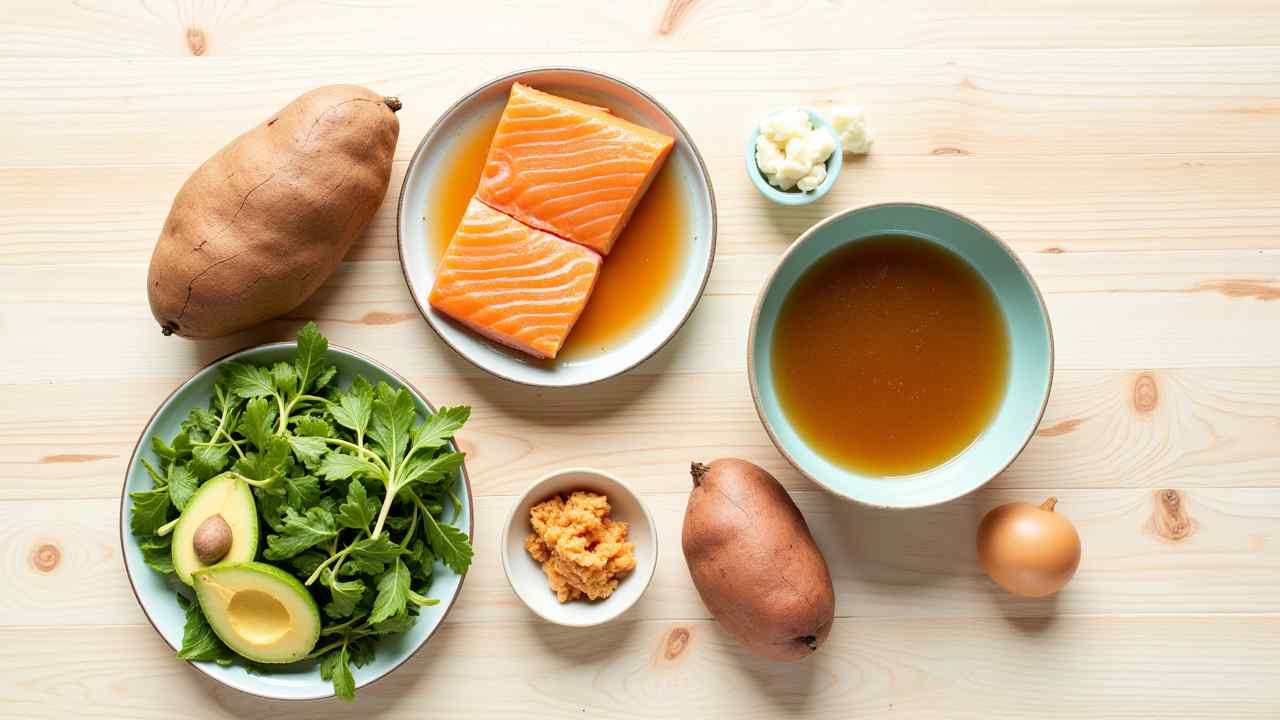
🌿 A Guide to the Auto Immune Diet (AIP) for Inflammation & Healing
🌿 Understanding the Auto Immune Diet: A Guide to the AIP Protocol 🌿
❗ Important Health Information: The Auto Immune Diet is a therapeutic protocol. It is intended to be used for specific health reasons. You should always consult with a doctor or a qualified health practitioner before starting this or any restrictive diet.
An autoimmune disease is a condition where the immune system attacks the body's own tissues. This can cause chronic inflammation and a wide range of symptoms. Diet can play a key role in managing these conditions.
The auto immune diet, formally known as the Autoimmune Protocol (AIP), is a powerful dietary strategy. It is designed to reduce inflammation and help heal the gut. It is a tool for identifying potential food triggers. Let's explore how this protocol works. 💪
🤔 What is the Theory Behind the Auto Immune Diet?
The AIP diet is based on the concept of intestinal permeability, or "leaky gut." This theory suggests that the lining of our intestines can become damaged. This allows food particles and toxins to enter the bloodstream.
When this happens, the immune system can be triggered. This may lead to an inflammatory response. The goal of the auto immune diet is twofold. It aims to remove all potential food triggers.
Simultaneously, the diet focuses on nutrient-dense foods. These foods provide the building blocks to help repair the gut lining. The idea is to calm the overactive immune system. This gives the body a chance to heal.
⚙️ What Are the Two Phases of the AIP Diet?
The AIP diet is not a lifelong plan for most people. It is a structured process with two main phases. Each phase has a specific and important purpose. This structure is key to its success.
What is the Elimination Phase?
This is the first and strictest phase. During this time, you completely remove a long list of foods. These foods are considered potential triggers for inflammation. This phase typically lasts from 30 to 90 days.
The goal is to give your body a complete break. Many people notice a significant improvement in their symptoms during this period. The elimination phase continues until you feel a real, sustained improvement.
What is the Reintroduction Phase?
Once you feel better, the real work begins. You start to reintroduce the eliminated foods. This must be done very slowly and systematically. You add back one food at a time to test your body's reaction.
This phase is a personal experiment. It helps you identify your unique trigger foods. The ultimate goal is to create the broadest, most nutrient-dense diet that you can tolerate without symptoms.
🚫 What Foods Must Be Avoided During the Elimination Phase?
The elimination list for the auto immune diet is extensive. It removes all common inflammatory foods and allergens. Being 100% compliant during this phase is essential for results.
- Grains: All grains, including wheat, rice, corn, and oats.
- Legumes: All beans, lentils, soy, and peanuts.
- Dairy: All milk, cheese, yogurt, and butter.
- Eggs: A very common food sensitivity.
- Nightshades: Tomatoes, potatoes, eggplants, peppers, and most chilies.
- Nuts and Seeds: All nuts, seeds, and their butters.
- Other: Coffee, chocolate, alcohol, industrial seed oils, and all processed foods.
✅ What Foods Form the Basis of the Auto Immune Diet?
While the avoid list is long, the diet is not about starvation. It is about focusing on the most nutrient-dense foods on the planet. These foods provide the resources for healing.
What Are the Core Nutrient-Dense Foods?
Quality animal protein is the foundation. This includes grass-fed meat and wild-caught fish. Organ meats like liver are especially encouraged. Bone broth is also a key healing food.
Which Vegetables Are Included?
You can eat a wide variety of vegetables. Just be sure to avoid the nightshade family. Load up on leafy greens like spinach and kale. Cruciferous veggies like broccoli and cauliflower are also great. 🥗
Are Healthy Fats Part of the Diet?
Yes, healthy fats are very important. Good sources include avocado, olive oil, and coconut oil. High-quality animal fats are also a key part of the auto immune diet. These fats are essential for hormone health.
⭐ Is the Auto Immune Diet the Right Approach for You?
The auto immune diet is a serious commitment. It is a challenging and restrictive protocol. However, for many people struggling with autoimmune conditions, it can be a life-changing tool. It provides a path to understanding your body.
Remember, this is not a forever diet. It is a temporary diagnostic tool. The goal is to find a long-term, sustainable way of eating. This personalized diet should keep you feeling your best.
Because it is so restrictive, professional guidance is highly recommended. Working with a doctor or a knowledgeable dietitian is the safest approach. They can help you navigate the process. This ensures you are getting the nutrition you need. ❤️